B&NES have recently launched their transport consultation. If you are interested in reduction traffic congestion, energy use and pollution in Bath then read on; we have tried to summarise the consultation to save you time. If you have time then it would be great if you could complete the council’s feedback form by the deadline on July 25th. Links to further background reading are provided at the end of this web page. There is also an open consultation event at the Guildhall on Friday 11th July.
The consultation explores a variety of options to reduce traffic and pollution in central Bath, but focuses on reducing the barriers to walking and cycling as a way of cutting car traffic.
Summary of consultation and proposals
The council’s summary of their proposals are as follows:
- A walking/cycling strategy to make Bath the UK’s most walkable city
- A parking strategy to support the economic growth but at the same time reducing the amount of off-street spaces within the city centre
- Supporting greater use of buses and rail to reduce the number of cars entering the city.
- Continue to expand our existing P&R sites, where we can, to reduce the number of parking spaces within the city.
- Better management of HGVs within the city
- Finding a new location for coaches to park once they have dropped off visitors in the city centre
The council’s report starts by providing some background information on the existing transport trend in Bath, which is best summarised by 3 graphs:
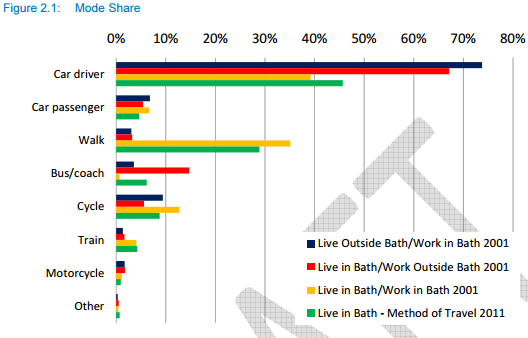
- Sole occupancy cars are the main form of transport in Bath, although walking is a much higher share of journeys than other cities
- Cycling is restricted because of the topography of the city
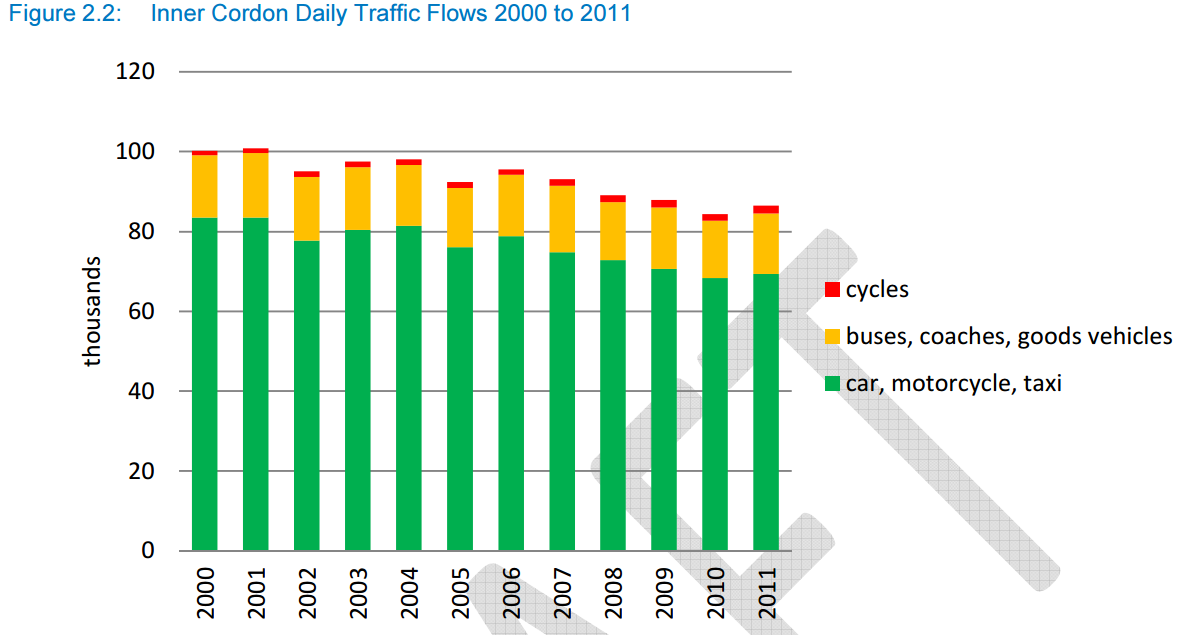
- Traffic growth has been gradually reducing in the last few years, although it is not clear whether this is to do with the recession
- The report does not attempt to assess the impact of the 7,000 homes due to be built close to the centre of Bath over the next 10 years as part of B&NES’s Core Strategy
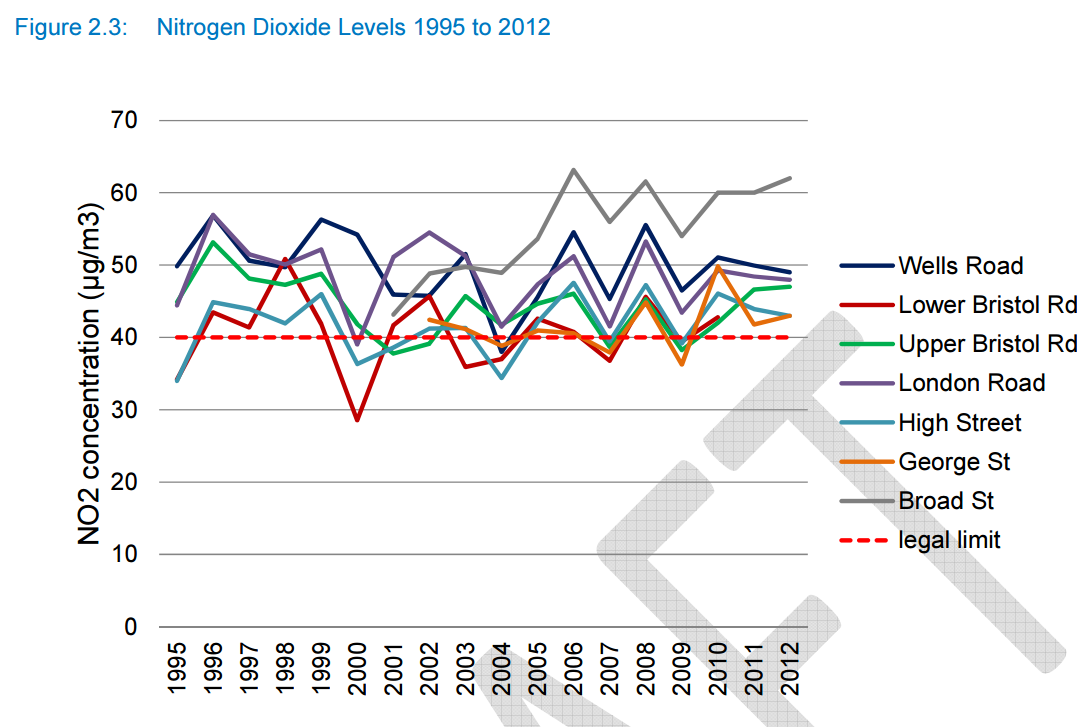
- This graph is a little curious, in that it suggests pollution levels haven’t changed over the last 15 years – something which seems inconsistent with the previous traffic volumes graph which shows fewer journeys?
- Also why if new cars are less polluting because of improved exhaust treatment has pollution not dropped? (Update 12 Jul 2014: the reason is probably the increase in diesel cars from 14% of new cars in 2000 to almost 50% in 2010 – diesels produce more particulates and NOX than petrol cars)
Walking
The plan is to make walking safer and more viable by increasing the priority of walking in central Bath relative to other forms of transport:
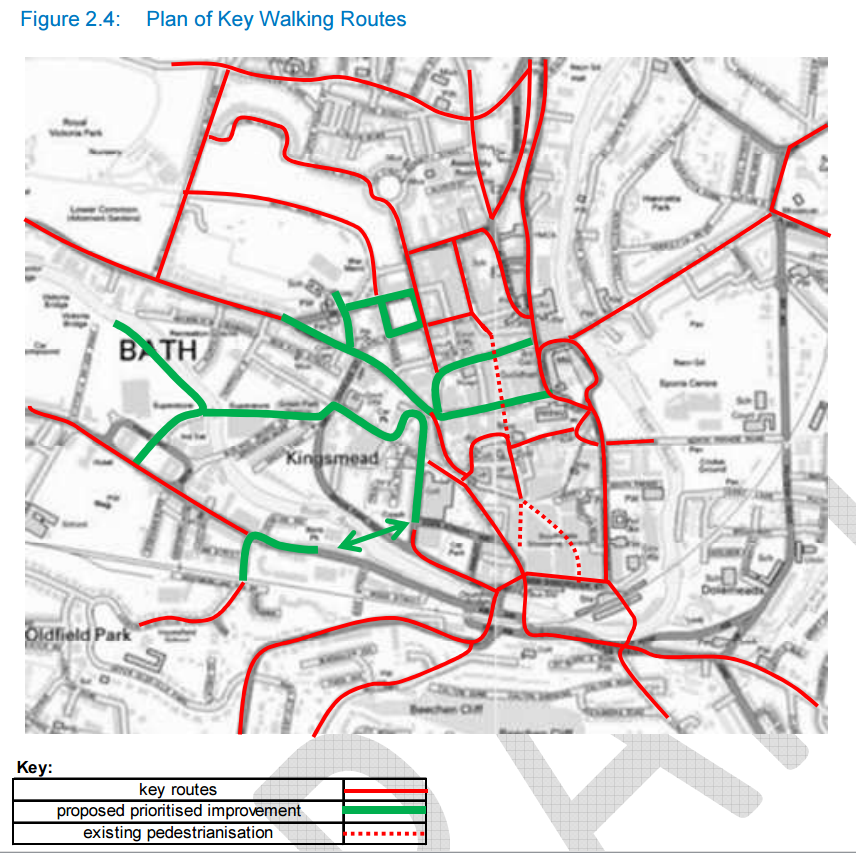
Bath is a very ‘walkable’ city and the proportion of people walking is much higher than other cities.
Cycling
Cycling is to be further encouraged by improvements in road junctions and prioritisation although there seems little new in the proposals:
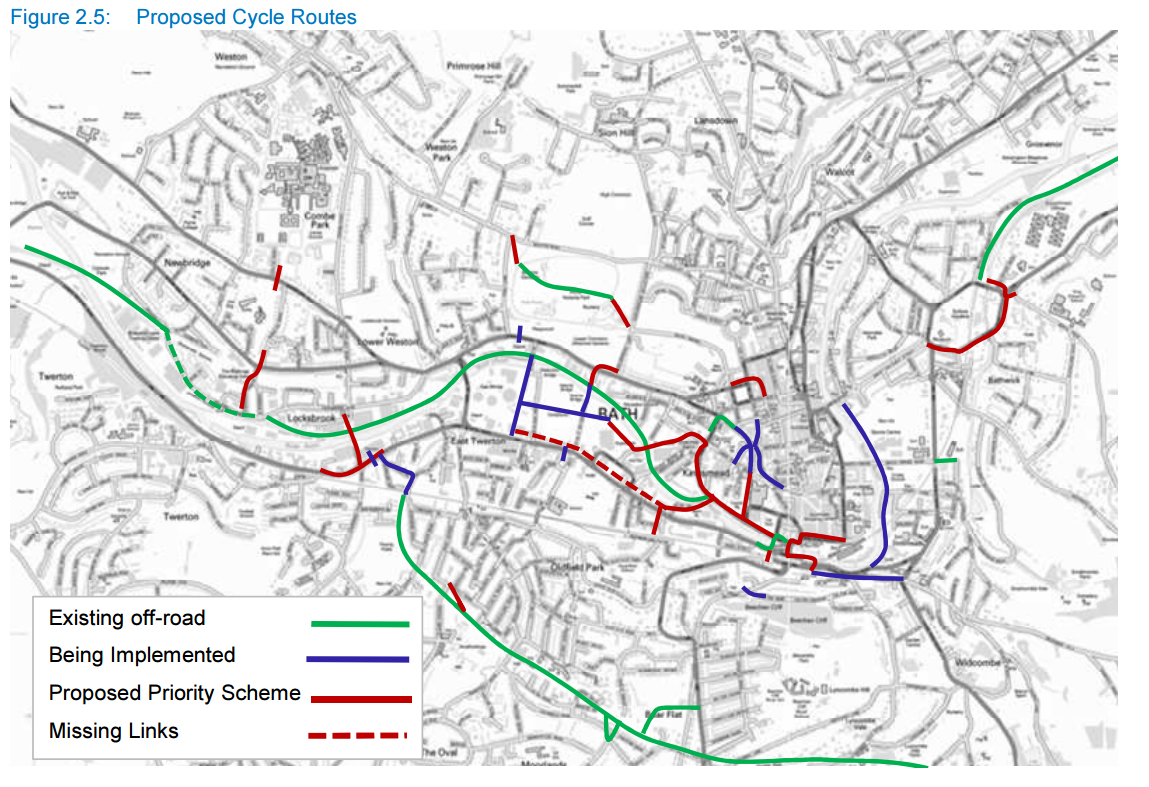
Cars
- Improved traffic management
- Promote car sharing and workplace travel plans
- Try to reduce the 12% of local traffic in the centre of Bath which could use other means – e.g. buses
- Continue to promote and enhance Park and Ride
- But, more traffic will be generated by the 7,000 homes due to be built in the immediate vicinity of Bath over the next 10 years and the development of the ‘Enterprise Area’
- There are 80,000 vehicle movements per day in Bath but only 3,500 park and ride spaces
- Developing a Park and Ride site to the east of the city to complement the other 3 park and ride sites
- No mention of electric vehicles, and charging points, although there is a question on the subject in the questionnaire/consultation
- No mention of the impact autonomous vehicles might have on future transport strategy
- No mention of car clubs – which would reduce the number of cars parked on Bath streets and probably reduce the number of car journeys
Buses
- Declining use from fee paying passengers
- Report claims the services is ‘of a good quality’
- Prioritising bus traffic, bus lanes to provide more reliable faster service
- Introduction of a smart card
- It talks about ‘revised fare structures’ for inter-urban journeys, but doesn’t talk about reducing the cost of tickets
- Coaches: with the closure of the Avon Street car park, another alternative needs to be found
Trains
- Electrification will reduce pollutions (particularly particulates)
- New stations at Corsham, Royal Wotton Bassett, but no mention of a new station at Saltford
- Train usage has increased significantly over the last few years:
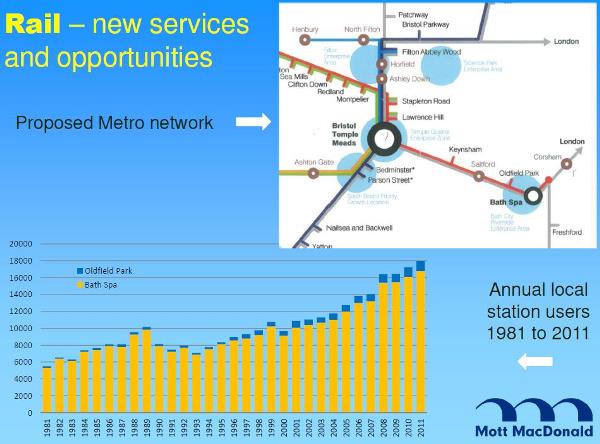
- New park and rail site at Bathampton with link road from A36 to A46 costing £37million – although this is not mentioned in the main Nott MacDonald report
Delivery traffic/large lorries
- Difficult to address
- Some vague suggestions about out of hours deliveries , consolidation but nothing concrete
Background Reading
- B&NES press release providing overview of transport strategy and consultation
- Bath Chronicle article
- Main B&NES webpage covering transport strategy
- B&NES Draft Report on Transport Strategy written by Mott MacDonald
- B&NES online feedback form – provides you with the opportunity to express your views on the subject – needs to be completed by 25th July – contains about 17 questions and takes about 10 minutes to complete